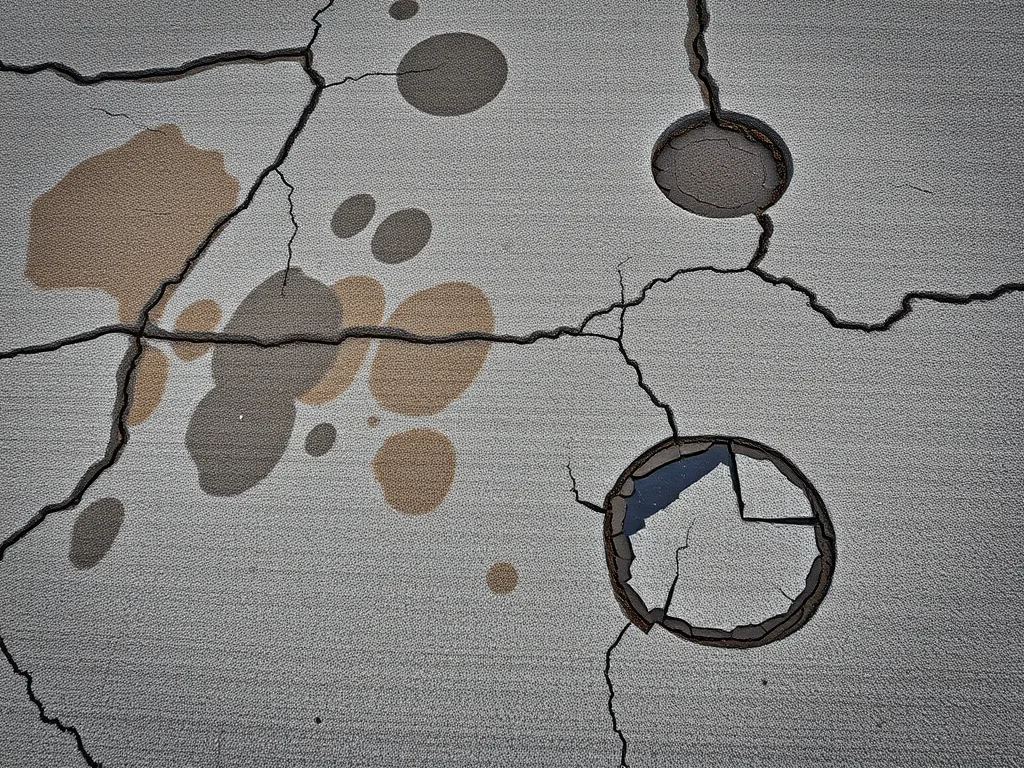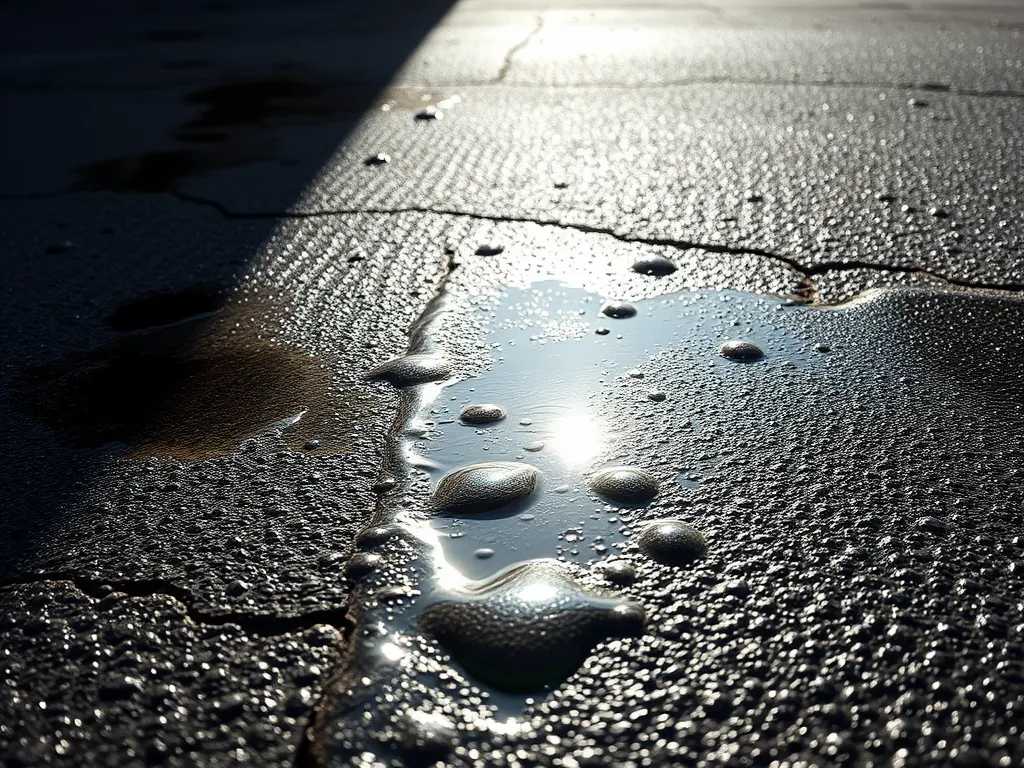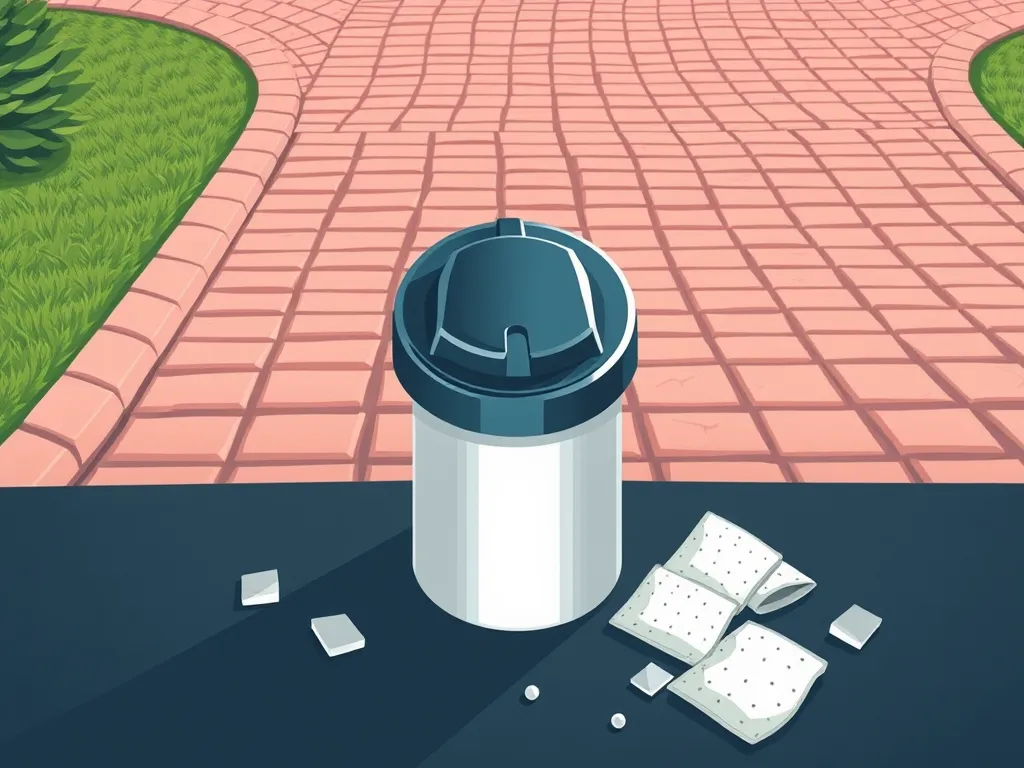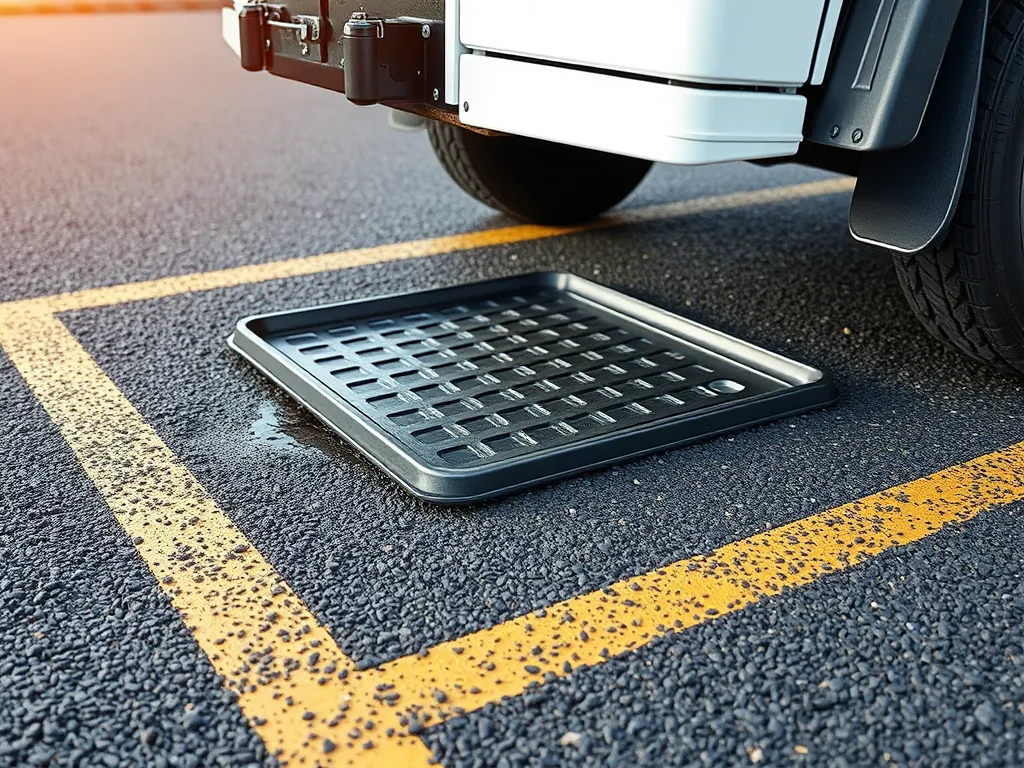Does Gas Destroy Asphalt?
Published on: November 22, 2025 | Last Updated: April 14, 2025
Written By: George Voss
Yes, gasoline damages asphalt by breaking down its binder (bitumen) within hours. Asphalt contains 95% aggregates like stone and sand held together by 5% bitumen. Gasoline acts as a solvent, softening this sticky binder. This weakens the surface, leading to cracks, pits, or potholes if untreated. Immediate cleanup within 30 minutes reduces harm.
This article explains how gas interacts with asphalt, immediate vs long-term risks, and repair costs. Learn prevention methods like sealcoating every 2-3 years, safe fuel handling steps, and eco-friendly stain removal using cat litter or baking soda. We’ll compare gasoline damage to UV rays, water, and chemicals like oil or antifreeze.
Contents
- Understanding Gasoline’s Impact on Asphalt
- Immediate and Long-term Effects Of Gas Spills
- Can Gasoline Remove or Dissolve Asphalt?
- What Damages Asphalt the Most?
- How to Remove Gas Stains From Asphalt
- Preventing Gasoline Damage to Asphalt
- Does Spilled Gasoline Evaporate From Asphalt?
- Environmental Impact Of Gasoline on Asphalt
- Frequently Asked Questions
- Closing Thoughts
- Additional Resources for You:
Understanding Gasoline’s Impact on Asphalt
Gasoline can degrade asphalt surfaces through physical and chemical reactions. Even small spills demand attention due to asphalt’s porous nature and petroleum-based composition.
How Gasoline Interacts With Asphalt Surfaces
Gasoline acts as a solvent on asphalt, which contains bitumen (a sticky petroleum binder) and mineral aggregates. When spilled, gasoline penetrates the surface within 2-5 minutes, softening bitumen. This weakens the bond between aggregates, causing:
- Surface softening (visible within 15-30 minutes)
- Loss of structural integrity
- Increased vulnerability to cracks under weight
Hot asphalt (mixed at 300-400°F) hardens as it cools, but gasoline reverses this process by dissolving bitumen—the 5-20% binder holding pavement together.
Chemical Breakdown Of Asphalt by Gasoline
Gasoline contains aromatic hydrocarbons like toluene and xylene, which attack bitumen’s molecular structure. These chemicals:
- Reduce bitumen viscosity by 40-60% within 1 hour
- Displace lighter oils in asphalt binders (PG 64-22 or PG 76-16 grades)
- Create oxidation pathways, accelerating aging
Modern ethanol-blended gasoline (E10/E15) worsens damage. Ethanol increases gasoline’s solubility, letting it penetrate 30% deeper than pure gasoline. This strips protective sealcoats and erodes aggregate bonds. After evaporation, degraded bitumen leaves a brittle surface prone to raveling and potholes.
While gasoline’s chemical attack starts fast, visible damage depends on spill size, pavement age, and climate. Next, we’ll analyze how quickly gas spills compromise driveways and roads.
Immediate and Long-term Effects Of Gas Spills
Gas spills harm asphalt in two ways: quick surface harm and slow wear over time. Both need swift care to stop worse issues.
Does Gasoline Ruin Asphalt? Key Risks
Gas eats the binder (bitumen) that holds asphalt together. This weakens the mix. Risks include soft spots, cracks, and holes. Fresh spills hit harder, but even small leaks cause harm. Unsealed driveways face 2-3x faster wear after gas contact.
How Fast Does Gas Destroy Asphalt?
Damage starts in 10 minutes. Heat speeds this up. A quart of gas can soften 1 sq.ft. of asphalt in 30 minutes. Binder loss reaches 15% within 2 hours, cutting pavement life by years.
Timeline of Damage from Gasoline Spills
| Time | Damage |
|---|---|
| 0-10 min | Surface softens; stains form |
| 30 min | Binder breaks down; grit appears |
| 2 hrs | Raveling starts; rocks loosen |
| 24 hrs | Cracks spread; edges lift |
| 1 week | Potholes form; repair costs jump 50% |
Once damage sets in, quick fixes save costs. Next, learn how to clean gas stains before they turn into costly repairs.

Can Gasoline Remove or Dissolve Asphalt?
Gasoline doesn’t fully dissolve asphalt like water melts sugar, but it breaks down the material’s core components. When fuel sits on pavement, its petroleum-based solvents attack the bitumen binder that holds aggregates together. This chemical reaction erodes structural strength over time, turning sturdy surfaces into brittle, crumbly patches.
Why Gasoline Weakens Asphalt Integrity
Asphalt relies on Performance-Graded (PG) binders to stay flexible under stress. Gasoline’s hydrocarbons dissolve these binders, reducing viscosity by up to 40% within 24 hours. The compromised mix loses cohesion, allowing aggregates to separate. A single quart of spilled gas can degrade 2-3 square feet of pavement, slashing load-bearing capacity by 5-10%.
Signs Of Gasoline Damage on Driveways
Look for dark stains with faded edges where fuel penetrated deep. Surface softening creates a sticky texture underfoot, while loosened aggregates leave gravel-like debris. Untreated spills trigger spiderweb cracks within weeks, often leading to potholes near fuel stations or parking spots. Even after evaporation, weakened areas remain prone to water intrusion and freeze-thaw damage.
While gasoline poses clear risks, asphalt faces threats beyond fuel spills. Next, we’ll explore how UV exposure and water erosion stack up against chemical degradation.
Also See: Bitumen in Highway Construction: Benefits & Uses
What Damages Asphalt the Most?
Asphalt faces daily threats. While gas spills harm surfaces, other factors cause more widespread damage over time. Let’s break down the top culprits.
Comparing Gasoline to Other Asphalt Degraders
Gasoline eats at asphalt binders fast but ranks below these main threats:
- UV rays: Sunlight breaks down binders through oxidation, causing cracks in 2-5 years.
- Water: Pooled water seeps into cracks, eroding the base. Freeze-thaw cycles split pavement.
- Salt/chemicals: Ice melt salts, oil leaks, and antifreeze soften asphalt over months.
UV Exposure, Water, and Chemical Spills
UV damage starts when sunlight hits the surface. Binders lose flexibility, leading to alligator cracks. Water worsens this by washing away fines (tiny stones) that hold the mix. Chemical spills like gas speed up binder loss but act slower than repeated water damage. For example, a single gas spill may weaken a spot in days, while yearly freezing can ruin a whole drive in 3-7 years.
Gasoline stains matter, but sun and water demand more attention. Fix small spills fast. Plan for sealcoating every 2-3 years to block all three threats.
Next, let’s tackle how to erase gas stains before they set.

How to Remove Gas Stains From Asphalt
Gasoline spills demand immediate action to minimize asphalt damage. Quick cleanup prevents bitumen breakdown and surface erosion.
Step-by-step Cleaning Methods
Follow these proven techniques to address fresh or dried gasoline stains effectively.
Absorbent Materials (Cat Litter, Baking Soda)
Blot new spills with cat litter within 15 minutes. Crushed clay absorbs 90% of liquid hydrocarbons. For residue, mix baking soda with water (1:3 ratio) into a paste. Scrub stained areas using a stiff-bristle brush. Rinse with low-pressure water after 24 hours.
Eco-Friendly Cleaners for Gasoline Stains
Use biodegradable degreasers like GreenShield or EcoSolve for persistent stains. Apply citrus-based solvents to dissolve bitumen-attacking compounds without harming asphalt polymers. Avoid bleach or ammonia – these accelerate pavement oxidation.
When to Use Professional Asphalt Cleaners
Call specialists if stains penetrate deeper than 1/4 inch or cover over 10 sq ft. Professionals use 2,500-3,500 PSI hot water extraction systems with pH-neutral detergents. This removes embedded petroleum residues while preserving aggregate bonds. Costs average $2-$4 per square foot.
Persistent gasoline odors signal deeper contamination. Hydrocarbon testing kits ($45-$80) measure spill penetration depth before deciding repair strategies.
Effective stain removal buys time, but repeated gasoline exposure still degrades pavement. Next, learn how to shield your asphalt from future fuel damage.
Preventing Gasoline Damage to Asphalt
Proactive steps minimize harm from fuel spills. Proper care keeps surfaces intact while cutting repair costs by up to 60% over five years.
Protective Measures for Driveways
Two strategies dominate: creating physical barriers through sealcoating and modifying fuel transfer methods. Both lower risks linked with gasoline and asphalt interactions.
Sealcoating as a Barrier Against Spills
Fresh sealcoats block 90% of gasoline penetration within the first 24 months. This coal-tar or petroleum-based layer fills surface voids, reducing porosity by 75%. Professionals recommend reapplying every 3-5 years, costing $0.15-$0.25 per square foot. For existing gasoline stains on asphalt, scrub the spot before sealing to prevent trapped residues.
Safe Fuel Handling Practices
Use spill-proof containers with screw-top lids during refueling. Position vehicles so fuel caps face away from paved zones. Keep absorbent materials like oil-dry granules nearby—one pound absorbs 12 oz of liquid. If gas leaks on driveways occur:
- Blot spills within 10 minutes using kitty litter
- Scrub with trisodium phosphate (TSP) solutions
- Rinse thoroughly to stop chemical migration
While quick cleanup helps, residual effects might linger even after gasoline evaporates—factors influencing long-term impacts come next.

Does Spilled Gasoline Evaporate From Asphalt?
Gasoline starts to turn to vapor in 10-20 minutes on hot asphalt. But the harm starts fast. Even as gas fades, it leaves oils that soak into the pavement. These oils attack the glue (bitumen) that holds asphalt together.
Residual Effects After Evaporation
Once gas dries, it breaks down bitumen’s grip on rocks and sand. Bitumen softens at 140°F—gas lowers this by up to 30°F. Weak spots form where cars press down, causing dents or cracks.
In 3 weeks, gas-soaked asphalt loses 30-40% of its strength. Sun and rain speed up damage. Oxidized bitumen turns brittle, leading to spider cracks or potholes. Stains also trap heat, making the surface age faster.
But the harm doesn’t stop there—gas spills also affect soil and plants near the pavement. Next, we’ll explore eco risks and safe clean-up steps.
Environmental Impact Of Gasoline on Asphalt
Gasoline spills harm more than just asphalt surfaces—they threaten ecosystems. BTEX compounds (benzene, toluene, ethylbenzene, xylene) in gasoline seep into soil and groundwater. A single quart of gas can contaminate 750,000 gallons of water. Asphalt’s porous structure accelerates this spread, allowing toxins to linger for years.
Eco-conscious Cleanup Considerations
Quick, eco-friendly cleanup minimizes environmental harm. Avoid pressure washing or solvent-based cleaners—these push gas deeper into asphalt pores and waterways. Instead, use plant-based degreasers with pH-neutral formulas. For small spills, biodegradable absorbents like corn-based cat litter trap contaminants without releasing microplastics.
| Method | Eco-Rating | Cost per Sq.Ft. |
|---|---|---|
| Baking Soda Paste | High | $0.15 |
| Commercial Bio-Cleaners | Medium | $0.40 |
| Sealcoating Post-Cleanup | High | $0.25 |
Sealcoating after cleanup adds a protective layer, reducing future gas penetration by 60-70%. Always dispose of contaminated materials at hazmat facilities—dumping in trash risks landfill leaching. Municipalities often fine improper disposal up to $10,000 per incident.
Proactive measures matter. Installing drip pans under vehicles and using fuel stabilizers during storage cuts spill risks by 85%. For existing gasoline stains on asphalt, enzymatic cleaners break down hydrocarbons without harming nearby plants.
Balancing asphalt preservation with environmental safety starts with informed cleanup—knowledge that’s equally vital for tackling recurring maintenance challenges.

Frequently Asked Questions
Will Gasoline Ruin Asphalt Driveways Permanently?
While gasoline causes significant damage to asphalt, the extent of the ruin can vary based on the spill size and cleanup efforts. Prompt action can mitigate long-term effects. If addressed quickly, asphalt surfaces can often be restored, but prolonged exposure without intervention may lead to permanent damage.
How to Fix Gasoline-damaged Asphalt?
To repair asphalt affected by gasoline, begin with thorough cleaning to remove any residual gas and stains. Depending on the damage, options range from patching small areas with asphalt filler to resurfacing large sections. Consulting with a professional can ensure the most effective repair methods are employed.
What Dissolves Asphalt Besides Gasoline?
Aside from gasoline, several substances can dissolve asphalt, including certain solvents like acetone, mineral spirits, or industrial degreasers. Chemical spills from antifreeze, oils, and some cleaning products can also break down asphalt’s binder over time.
Can Small Gas Spills Cause Significant Damage?
Yes, even small gasoline spills can lead to considerable damage over time. Gasoline’s penetrating nature can weaken asphalt’s structure, leading to soft spots, cracks, and accelerated wear if not cleaned up quickly. It’s essential to address even minor spills promptly to prevent long-term deterioration.
Closing Thoughts
Gasoline can significantly damage asphalt surfaces, leading to costly repairs. It interacts chemically with asphalt, weakening its integrity and causing visible deterioration. Immediate action is crucial to prevent long-term effects. Quick cleanup reduces the risk, but allowing gasoline to sit can lead to irreversible damage.
To protect your asphalt, consider implementing protective measures such as sealcoating and practicing safe fuel handling. Regular maintenance can extend the lifespan of your driveway or pavement, ensuring it remains safe and attractive.
For more information on asphalt maintenance, tools, and calculators, visit Asphalt Calculator USA. Your asphalt deserves the best care!
Additional Resources for You:
- Lavin, P. (2003). Asphalt Pavements: A Practical Guide to Design, Production, and Maintenance for Engineers and Architects. London: Taylor & Francis.
- Gasoline spill on driveway – Best way to repair – RedFlagDeals.com Forums
- How Oils and Fuel Hurt Your Asphalt | B&E Coating Services
- a) Asphalt pavement affected by fuel spills. b) …
- What do You Use To Clean Oil/Gas Stains on Asphalt Driveway | Snowblower Forum


